Key takeaways:
- Invasive plant species threaten local ecosystems by outcompeting native species, disrupting biodiversity, and impacting wildlife.
- Community involvement is crucial in tackling invasive plants through volunteer efforts, educational workshops, and social media mobilization.
- Effective strategies include biological control, personal engagement in removal efforts, and thoughtful use of tools like hand trowels and biodegradable barriers.
- Successful case studies show that collective action can restore ecosystems, exemplified by initiatives in the Cape Floristic Region and partnerships between farmers and conservationists.
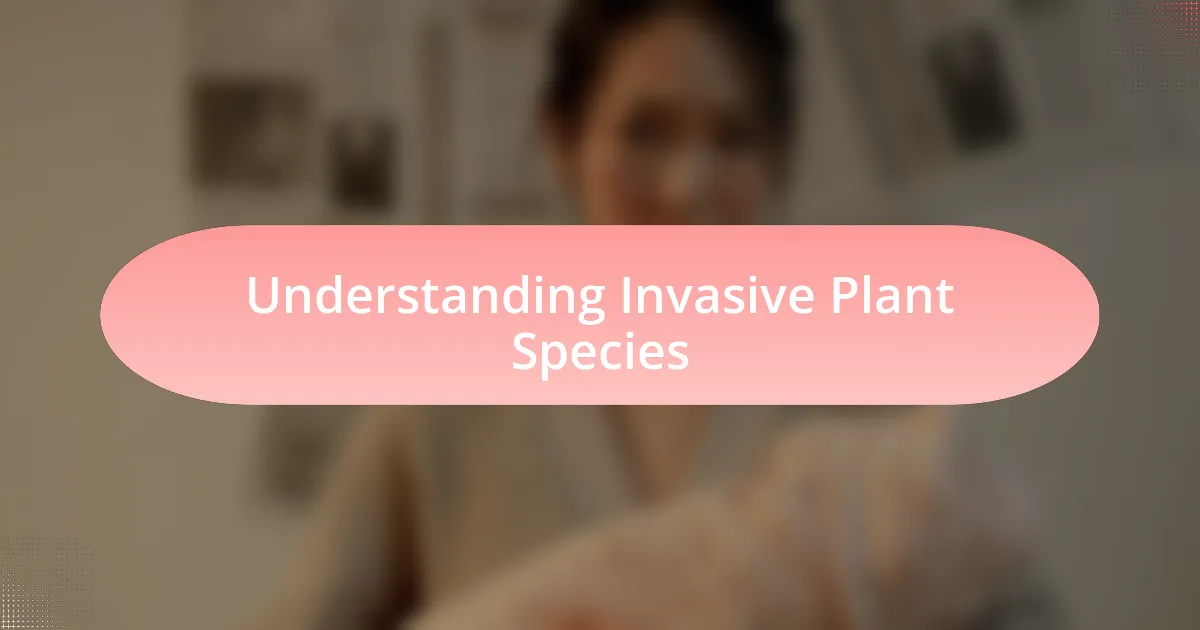
Understanding Invasive Plant Species
Invasive plant species are non-native plants that disrupt local ecosystems. They often outcompete native species for resources, eventually changing the landscape and harming biodiversity. Have you ever walked through a once-thriving meadow, only to find it overrun by a dense thicket of invaders? It can be disheartening to witness nature’s balance tipping due to these relentless species.
When I ventured into a local park, I was shocked to see how quickly certain invasive plants took over, smothering the native flora that once thrived there. It made me realize just how insidious these species can be; their rapid growth and reproduction often go unchecked. A simple question arose in my mind: how can we protect our beloved local plants and preserve the natural beauty that many of us cherish?
Understanding the biology of invasive plants is crucial. Many have traits that allow them to thrive in various environments, such as aggressive growth or high seed production. This adaptability is what makes them formidable adversaries in the fight for our ecosystems. Reflecting on the balance of nature, I often wonder how we can best equip ourselves to combat this plant battle and restore our landscapes.
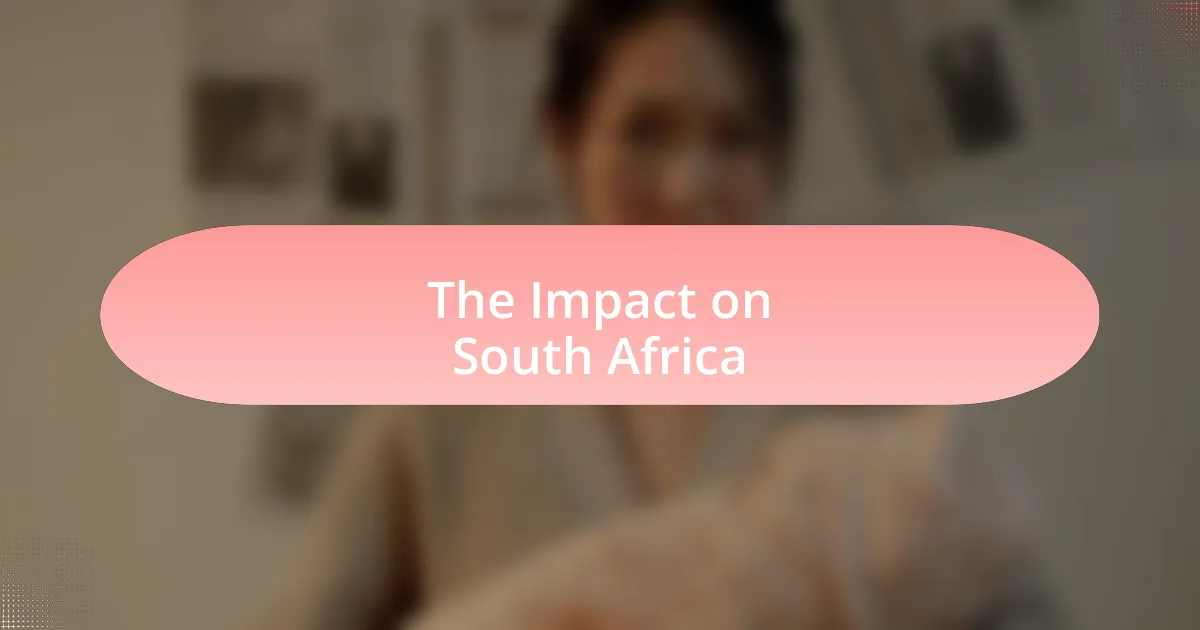
The Impact on South Africa
The impact of invasive plant species on South Africa is profound and multifaceted. From my experience hiking in the Cape Peninsula, I’ve seen firsthand how these plants can monopolize land, making it difficult for local wildlife to thrive. It’s frustrating to realize that a single species can alter an entire ecosystem’s dynamics and jeopardize the rich biodiversity that South Africa is known for.
I remember walking through the Drakensberg mountains, where I encountered large patches of invaders that choked out native vegetation. It was disheartening to observe fewer birds and insects flitting about, as the delicate balance of life seemed to hang by a thread. How can we stand by and allow such intrusion to dictate the fate of our natural heritage?
Furthermore, invasive plants can have serious economic implications for communities. Farmers and landowners often struggle with the costs of managing these species, diverting resources that could instead support sustainable agriculture or conservation efforts. Isn’t it time we collectively confront this challenge, prioritizing both our environment and economy in the face of such a relentless threat?

Strategies for Combatting Invasive Plants
Effective strategies for combatting invasive plants require a blend of vigilance and proactive measures. For instance, I’ve personally participated in community clean-up events where volunteers gather to remove invasive species. The camaraderie in these efforts is invigorating, and witnessing the gradual restoration of native flora makes each hour spent laboring feel worthwhile.
Biological control programs can also be an effective way to combat invasives. I recall a field trip to a local nature reserve where researchers introduced specific insects known to target invasive plant species. I was struck by the delicate balance of nature at play; it felt like we were inviting allies back into the ecosystem to reclaim what had been lost. This approach raises an important question: can we trust natural predators to help restore balance without causing further disruption?
Another strategy that resonates with me is educating the public on the identification and impact of invasive species. I’ve hosted workshops in local schools, teaching children about native plants and the ecosystem’s importance. Seeing their faces light up with curiosity is a reminder that the next generation holds the key to sustaining our natural heritage. Engaging communities in dialogue about these issues not only builds awareness but also fosters a sense of stewardship. How powerful would it be if everyone played a role in this fight?
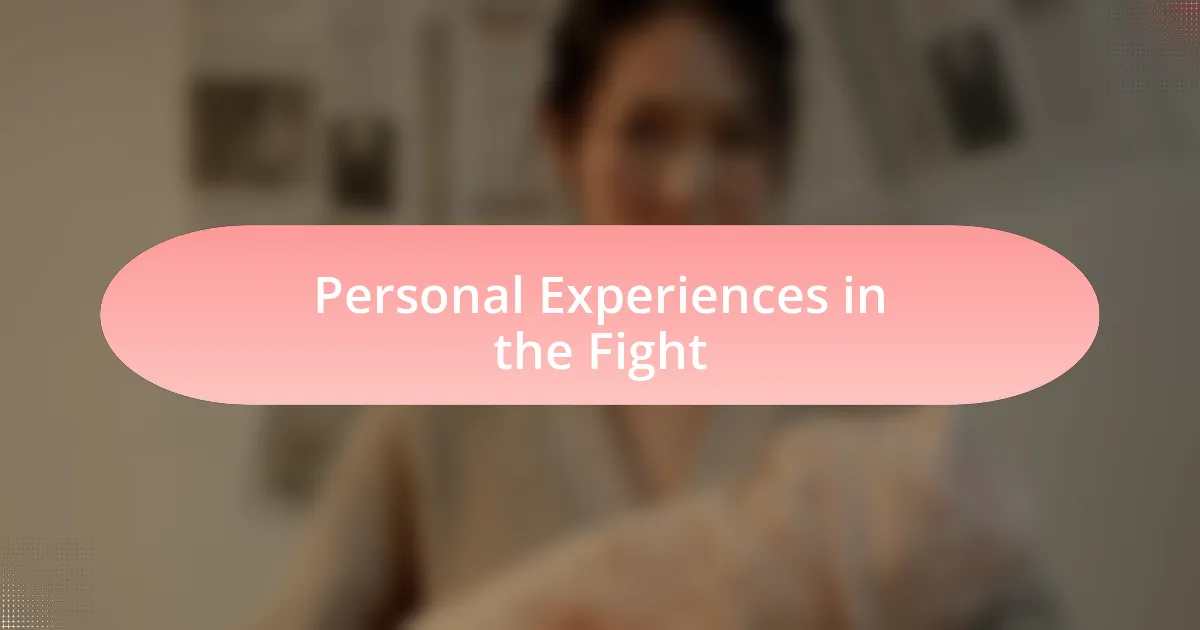
Personal Experiences in the Fight
I distinctly remember the first time I tackled invasive species in my own backyard. I was overwhelmed by the aggressive growth of a certain plant that seemed to snuff out my beloved native flowers. As I dug up those stubborn roots on a sunny Saturday afternoon, I felt a mix of frustration and triumph — it was like reclaiming my space, one shovel at a time.
During a volunteer day at our local park, I encountered a particularly tenacious vine strangling a tree. The team decided to cut it back first and then apply an herbicide as a last resort. As I watched the invasive plant start to wilt, a sense of hope washed over me. It made me wonder how many other small victories like this could collectively lead to healthier ecosystems.
In another experience, I joined a workshop where community members shared their own battles with invasive plants. Listening to their stories, I realized that many felt the same emotional connection to nature that I did. Hearing their frustrations and successes opened my eyes to how personal this fight truly is. If we each find a way to engage in this cause, could we not create a ripple effect that inspires action for our natural world?
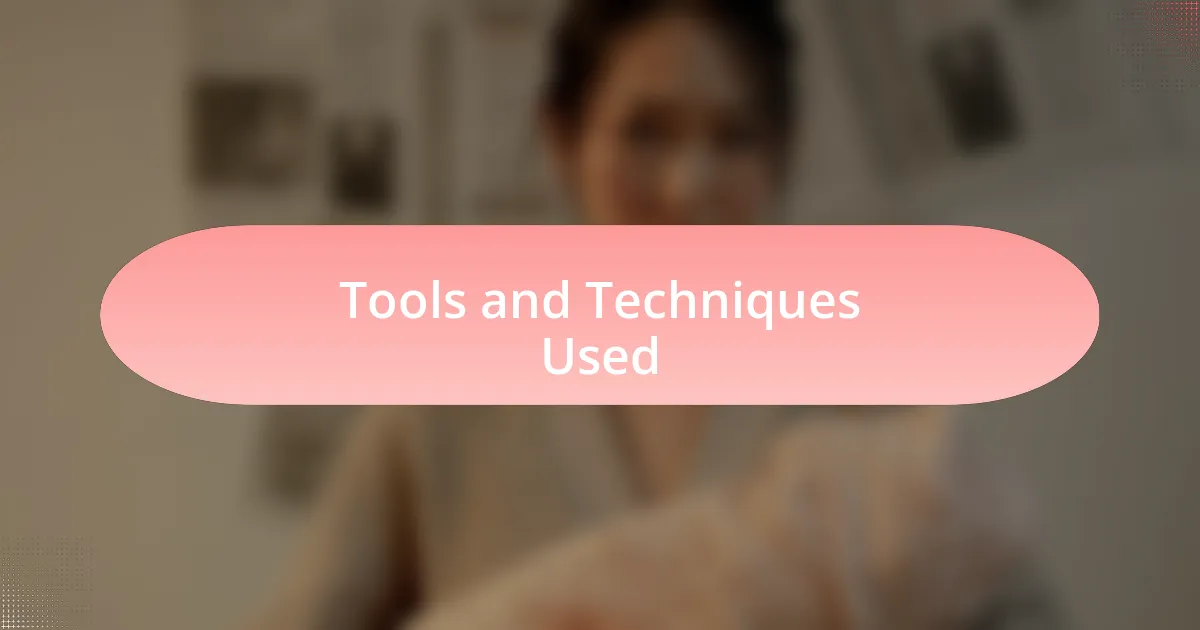
Tools and Techniques Used
When it comes to tools, I always reach for my trusty hand trowel and gloves first. There’s something incredibly satisfying about gripping the handle of a trowel, knowing it’s the weapon I need to uproot invasive species. Just the other day, I was out in a local patch of wildflowers, and with every dig, I felt a renewed sense of commitment to protecting our native flora. Do tools really make that big of a difference? Absolutely.
Alongside traditional digging tools, I’ve learned to appreciate the role of biodegradable barriers. One weekend, I placed down sheets of cardboard on a problematic area, hoping to smother the aggressive growth of invaders. Watching the sunlight block out those pesky weeds made me ponder how simple techniques can lead to significant changes in our landscapes.
Herbicides often draw controversy, but I view them as a tool of last resort, much like emergency surgery. I remember a time when I had to make that tough call—after manually removing as much as I could, I carefully applied a targeted herbicide to the remains of an invader. It’s a hard choice, one that weighs on my mind, but sometimes we have to be pragmatic to protect the ecosystem we love. When faced with such difficult decisions, I often wonder: are we balancing the scales, or are we perpetuating a cycle of dependency on chemicals?
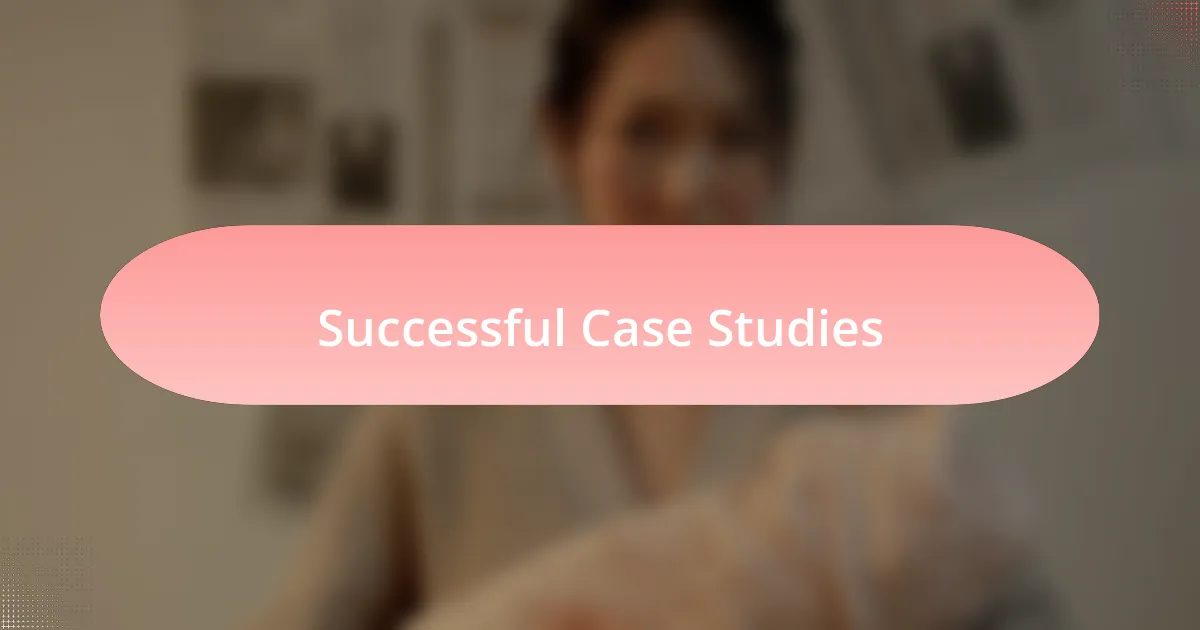
Successful Case Studies
One successful case study that stands out in my mind involves the initiative taken in the Cape Floristic Region. Here, teams of passionate volunteers rallied together to physically remove invasive species, especially the pervasive Acacia species. Seeing hundreds of people banding together for a common cause fueled my optimism—it’s a stunning example of how communal effort can restore balance to our delicate ecosystems. Imagine witnessing the vibrant blooms of indigenous plants make a comeback as the invaders were eliminated!
In another remarkable case, a partnership between local farmers and conservationists led to the restoration of a critical wetland area. I distinctly remember visiting one of the farms where they employed strategic grazing techniques. By allowing certain native grazers to thrive while controlling the invasive species, it’s as if a symphony had played out in the fields. It ignited my thinking: could innovative farming practices be key to eco-restoration?
Finally, a personal triumph was when I engaged in a pilot project in urban gardens, addressing the encroachment of invasive vines. I can still feel the rush of adrenaline as we transformed those overrun spaces into lush, thriving habitats for native insects and birds. It made me realize the significance of such small-scale efforts—could grassroots movements create a ripple effect for larger conservation goals?
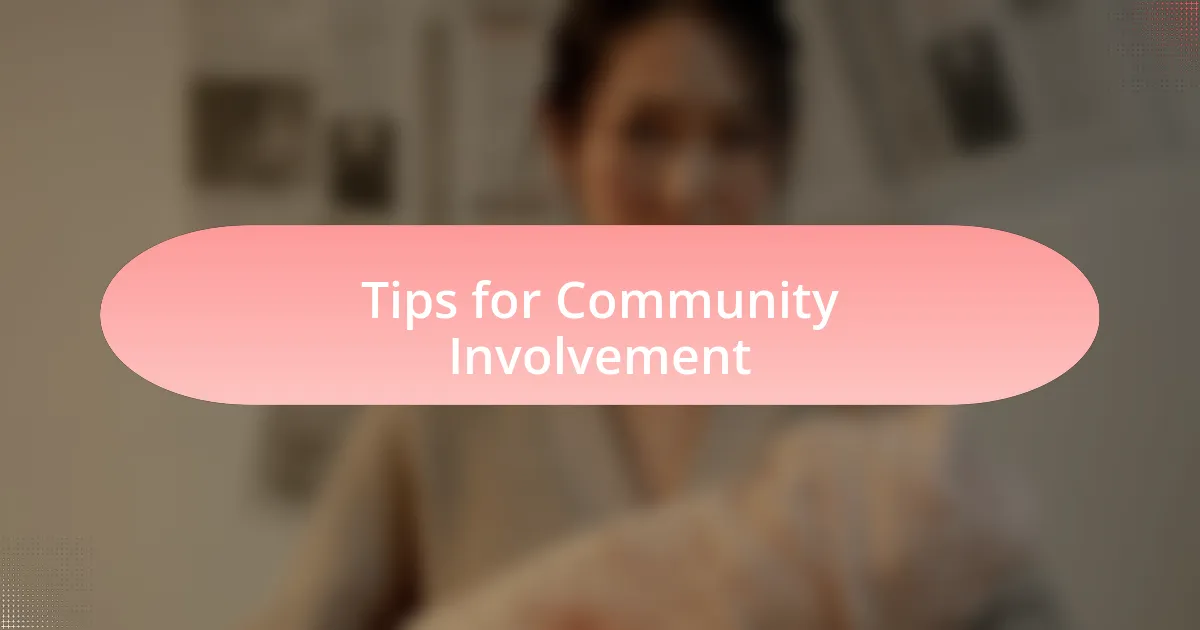
Tips for Community Involvement
When it comes to fighting invasive plants, community involvement is essential. I often encourage friends and neighbors to join local clean-up events. I remember my first group effort; it was surprising how much impact we had in just a few hours. Could you imagine transforming a neglected area into a green space filled with native flora?
Another effective strategy is to initiate educational workshops. I once organized a small gathering where we discussed the identification of invasive species. Watching participants light up as they learned to recognize harmful plants was incredibly rewarding. It made me wonder: how can shared knowledge empower communities to take action?
Don’t underestimate the power of social media to rally support and awareness. In my experience, creating a dedicated page for local initiatives has helped us connect with a broader audience. The excitement I felt when seeing community members share their successes and updates was palpable. Isn’t it uplifting to think that by simply sharing progress, we can inspire others to join our fight against these invasive species?